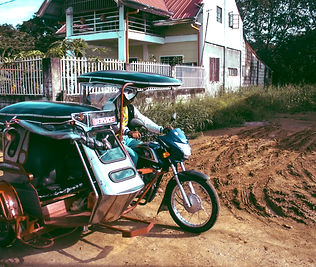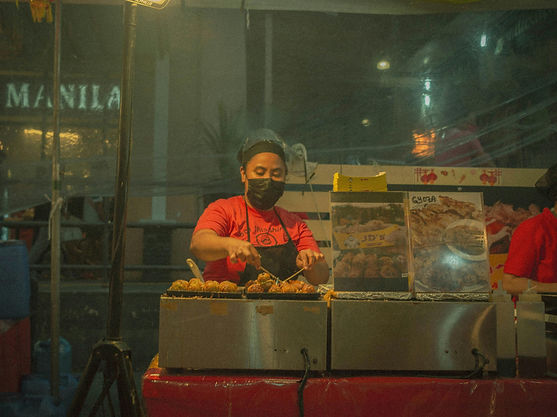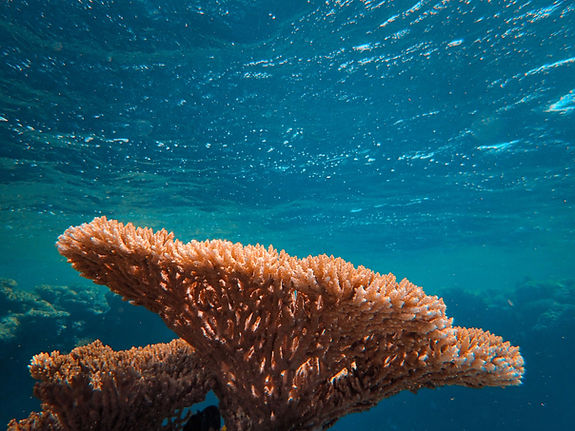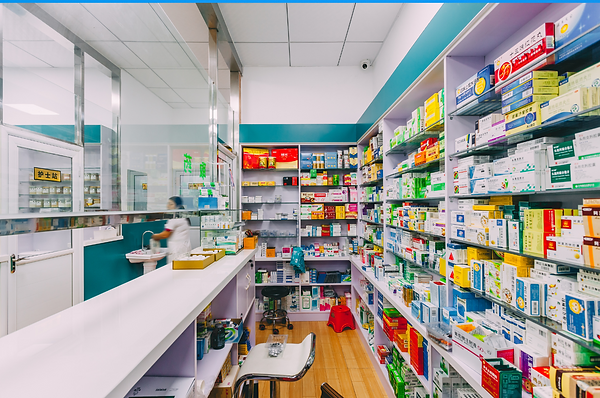
Philippines
At a Glance
From the buzzing streets of Manila to the emerald rice terraces of Banaue and the turquoise waters of Palawan, the Philippines is a breathtaking patchwork of islands, adventure, and hospitality. Across this sprawling archipelago, travelers should be mindful of mosquito-borne illnesses like dengue fever, particularly after the rainy season. Tap water is not safe to drink, and caution is needed when eating from small food stalls, especially in rural areas. Given the popularity of island-hopping and motorbike adventures, basic safety precautions — including helmets, life jackets, and sun protection — are essential. Packing a well-organized travel health kit, staying hydrated safely, protecting against mosquitoes, and preparing for limited healthcare options in remote areas can help ensure that your time in the Philippines is filled with beauty, exploration, and peace of mind.

Sun-soaked beaches and coral reefs make the Philippines paradise—but pack sun protection and watch for weather or insect-related illness in rural areas.

Don't Leave Without These
Get access to curated, pharmacist-reviewed packing guides, tailored to destinations like Cambodia, Vietnam, and Thailand — including brand names, specific combinations, and practical tips you won’t find in a generic travel article.
[Join the Travel Health Hub community]
Go-to travel health essentials — practical, proven, and always packed.
🦟 Mosquito Protection
Include repellent with 30–50% DEET, anti-itch cream, long-sleeved clothing, and mosquito nets if staying in basic or rural accommodation. Malaria tablets are strongly recommended — speak to your doctor about options like doxycycline or atovaquone-proguanil.
💩 Tummy Troubles Toolkit
Bring loperamide, oral rehydration salts (ORS), an antacid, and a short course of azithromycin for traveller’s diarrhoea. “Bali Belly” is common — prepare early, not when it’s too late. Hand sanitiser and wet wipes are essential when eating on the go or using roadside facilities.
☀️ Sun & Skin Care
Pack high-SPF sunscreen (50+), SPF lip balm, and hand sanitiser with 60–70% alcohol. Choose quick-dry, fragrance-free products to suit the heat and humidity.
🩹 First Aid & Docs
Include antiseptic solution, gauze, adhesive dressings, blister pads, gloves, and a thermometer. Bring a printed medical summary, prescriptions with generic names, and your travel insurance documents — including emergency evacuation coverage.
💊 Comfort & Care
Pack paracetamol or ibuprofen for pain, fever, and post-flight aches. Include an antihistamine for bites or allergies, and a basic cold & flu remedy. Consider Berocca, Hydralyte, or Hairy Lemon for hangover recovery or general energy support — they’re handy in the heat, especially after long beach days or Bali nights.
🔥 Extra Tip
Coral cuts can easily become infected in the Philippines' tropical waters. Pack an antiseptic solution, waterproof dressings, and start cleaning any cuts immediately after getting out of the sea.
Prep Well. Travel Well. Know the Risks.
The Philippines offers stunning islands, crystal-clear waters, and world-class diving—but travellers should be aware of some important health risks. Healthcare services are generally good in major cities like Manila and Cebu, but in remote islands and rural provinces, medical care can be basic or hard to access. Comprehensive travel insurance that includes emergency evacuation is strongly recommended, especially for those diving or island-hopping.
Mosquito-borne illnesses are a significant concern. Dengue fever is endemic year-round, especially during the rainy season (June–November). While malaria risk is low in most tourist areas, it persists in some remote parts of Palawan, Mindoro, and Mindanao. Protective clothing, insect repellent, and mosquito nets are essential.
The warm, humid climate makes prickly heat (heat rash) common, particularly after long, sweaty days in tropical conditions. Loose, breathable clothing and regular showers help reduce the risk.
Travellers planning to dive, snorkel, or explore coral reefs should be cautious of coral cuts, which can easily become infected in tropical environments. Minor reef scrapes should be cleaned immediately with clean water and antiseptic. Severe wounds should be evaluated by a medical professional.
Tropical ear infections (swimmer’s ear) are common after repeated water exposure. Drying ears after swimming and using ear drops designed to prevent infection can help reduce risk.
Finally, dehydration and heat exhaustion are often underestimated, especially for those active in the sun. Hydration, sun protection, and pacing physical activity during peak heat are key for staying healthy.
With good preparation, the Philippines offers unforgettable adventures across its vibrant islands and seas.

Eat Adventurously, Not Regretfully
The Philippines’ food culture is a vibrant mix of Spanish, Malay, Chinese, and American influences, offering everything from hearty stews to tropical desserts. Staples include adobo (vinegar-braised chicken or pork), sinigang (a sour tamarind-based soup), and lechon (crispy whole roast pork), often enjoyed at family gatherings and festivals. Street stalls tempt visitors with lumpia (spring rolls), grilled meats, and sweet treats like halo-halo (shaved ice layered with fruit, jelly, and condensed milk).
In rural areas, adventurous diners may come across unique local dishes such as fried beetles, stewed tree ant nests, and the famous balut (fertilised duck egg). While these foods reflect the country’s diverse culinary heritage, travellers should be cautious, as improperly stored or cooked dishes can increase the risk of foodborne illnesses.
Food hygiene standards vary widely across the islands. Stick to hot, freshly cooked meals, especially at small eateries and street stalls. Avoid raw seafood, cold buffets, and unboiled tap water. In the tropical heat, food spoils quickly—look for busy vendors where turnover is high, and when in doubt, choose dishes cooked right in front of you.
With a little care, travellers can experience the bold, diverse flavours of the Philippines safely—whether you stick to classics like adobo or venture into the wilder side of local cuisine.
Beyond the Basics: Unique Health Risks
Every destination has its own surprises. Here are the health risks that don’t always make it into standard travel advice—but are important to know before you go.

The Philippines is famous for its crystal-clear waters, world-class diving, and stunning coral reefs. However, travellers enjoying snorkelling, diving, and island-hopping should be aware of two common but often underestimated health risks: coral cuts and tropical ear infections.
Coral cuts are not just painful—they are prone to serious infection. Coral surfaces often harbour bacteria that can quickly turn minor scrapes into severe skin infections in tropical climates. Even small wounds may become swollen, red, and slow to heal if not properly managed. Immediate cleaning with fresh water and antiseptic, followed by covering the wound, is essential after any contact with coral. Seek medical attention if signs of infection develop.
Tropical ear infections, also known as "swimmer’s ear," are another frequent issue after repeated swimming or diving. Warm, humid conditions combined with trapped water in the ear canal create an ideal environment for bacterial or fungal growth, leading to pain, itching, and hearing loss if untreated. Dry your ears thoroughly after water activities, and consider using alcohol-based ear drops to prevent infections.
Packing a basic first aid kit with antiseptic solution, waterproof dressings, and preventive ear drops can make a major difference in avoiding these common but disruptive travel health problems.

Photo for editorial purposes only. Not affiliated with any specific provider.
When it doesn't go to plan
Healthcare standards in the Philippines are variable. In major cities like Manila, Cebu, and Davao, private hospitals can offer good quality care with modern facilities and English-speaking medical staff. Public hospitals are available but may be overcrowded, under-resourced, and have longer waiting times.
Travellers can access reliable medical care at private hospitals such as:
St. Luke’s Medical Center (Quezon City and Bonifacio Global City)
Makati Medical Center (Manila)
Chong Hua Hospital (Cebu)
The Medical City (Pasig)
For serious illness, injury, or complex surgery, travellers may require evacuation to Singapore, Bangkok, or back to Australia, depending on the severity and location.
Travel insurance that includes medical expenses and emergency evacuation is highly recommended.
Pharmacies are widespread and generally well-stocked in urban areas, although brand names may differ from those used in Australia. In rural areas and smaller islands, pharmacy access may be limited and medication quality less reliable.
Travellers should bring a full supply of their regular medications, along with prescriptions listing the generic drug names, and avoid purchasing unknown or unregulated medicines during travel.
Refer to SmartTraveller.gov.au or the Australian Embassy in Manila for updated health and safety information before departing.

Before you go
Before heading to the Philippines, check that you’re protected against common and travel-related illnesses, especially if you plan to island-hop, visit rural areas, or stay longer-term.
Essential Routine Vaccines
All travellers should be up to date with:
Measles-Mumps-Rubella (MMR)
Diphtheria, Tetanus, and Pertussis (Tdap)
Polio
Chickenpox (Varicella)
Influenza (seasonal flu)
COVID-19 (including booster doses if eligible)
Infants may need an early MMR or Hepatitis A vaccine if travelling.
Recommended Travel Vaccines
Recommended for most travellers:
Hepatitis A – Widespread food and water risk.
Hepatitis B – Important for all travellers, especially with healthcare exposure or long stays.
Typhoid – Risk from street food, small towns, and rural travel.
Rabies – Recommended if interacting with animals or travelling to rural areas.
Japanese Encephalitis (JE) – Consider if staying more than one month or visiting rural/agricultural areas.
Chikungunya – Rare, but vaccination may be considered for older travellers on long stays.
Yellow Fever – Entry Requirement
A yellow fever certificate is required if arriving from or transiting through a yellow fever-risk country.
.png)
🎒 Travel should be an adventure — not a health risk.
With the right advice, you can manage chronic conditions, complex medications, and health risks confidently on the road.
Book your Travel Health Consult and set yourself up for a healthier, safer journey.

Traffic Trouble: More Than Just a Travel Inconvenience
Traffic congestion is a major issue in the Philippines, particularly in urban centres like Manila, Cebu City, and Davao. Travel times can be unpredictable, and road rules are inconsistently followed. Aggressive driving, frequent lane changes, and minimal regard for pedestrians make crossing streets hazardous.
Outside cities, rural roads may be poorly maintained, narrow, and prone to flooding during the rainy season (June–November). Motorbike and scooter accidents are a leading cause of injury among travellers, particularly on islands and in resort areas.
Public transport options like jeepneys and tricycles are common but often lack safety features such as seatbelts. Taxis and ride-hailing apps like Grab are generally safer choices in urban areas.
Self-driving is not recommended unless travellers are very familiar with local conditions. Travel insurance that covers motor vehicle accidents and medical evacuation is strongly advised, especially for those planning inter-island travel or rural exploration.

Weather
The Philippines has a tropical maritime climate with three distinct seasons: hot dry (March–May), rainy (June–November), and cool dry (December–February). Temperatures typically range from 25–32°C year-round.
Exploring Without Limits: Travel and Chronic Conditions
)%20(1).png)
Join our members-only section for trusted, personalised advice on managing diabetes, heart health, arthritis, and more while travelling the world.
Access expert tips crafted for travellers living with chronic health conditions—because smart preparation leads to smoother, safer adventures.
Stay confident, travel protected, and make the most of every journey with tailored health strategies designed to go wherever you do.
Travel Well Extras
Seasickness and Barotrauma
Island-hopping and diving are highlights of any Philippine adventure, but come with risks. Seasickness is common on small boats, especially during choppy weather.
Barotrauma (pressure-related ear injuries) can occur during diving or snorkelling, especially for first-timers.
Practical Advice:
Pack motion sickness tablets for boat trips.
Equalise your ears regularly during dives.
Never dive with a cold or blocked sinuses.